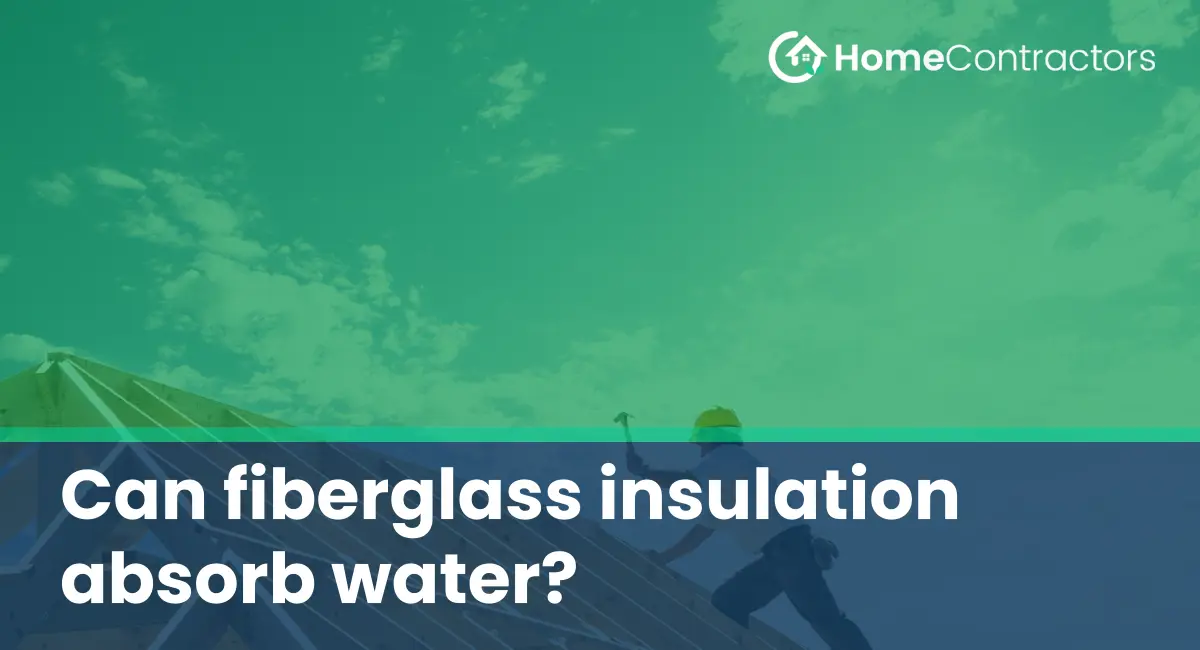Fiberglass insulation is a popular choice for insulating homes and buildings due to its excellent thermal properties and affordability. However, one common concern is whether fiberglass insulation can absorb water. In this article, we will delve into the topic and explore the potential for water absorption in fiberglass insulation.
Understanding Fiberglass Insulation
To understand whether fiberglass insulation can absorb water, it is essential to first grasp the basic composition of this insulation material. Fiberglass insulation is made from tiny glass fibers that are bound together using a binding agent. These fibers create air pockets that trap heat and improve energy efficiency.
The Composition of Fiberglass Insulation
Fiberglass insulation is typically sheathed in a paper or foil facing, which acts as a vapor retarder. This barrier helps to reduce the potential for moisture absorption. However, the glass fibers themselves are hydrophobic, which means they repel water. This characteristic provides some resistance to water absorption.
Water Resistance of Fiberglass Insulation
While fiberglass insulation is not entirely immune to water absorption, it is inherently water-resistant due to its composition. The glass fibers, being non-porous, are resistant to moisture penetration. Additionally, the paper or foil facing commonly used in fiberglass insulation helps to prevent water from seeping into the insulation.
Possible Impacts of Water Absorption
Although fiberglass insulation has natural water-resistant properties, there are certain situations where it may still come into contact with moisture. For instance, if there are leaks in the roof or walls, water may find its way into the insulation. If fiberglass insulation becomes wet, it can lose some of its insulating capabilities.
Effects of Water on Fiberglass Insulation
When fiberglass insulation absorbs water, its R-value, which is the measure of its thermal resistance, may decrease. This reduction in R-value can reduce the overall energy efficiency of the insulation. Additionally, moisture trapped within the insulation can promote the growth of mold or mildew. This can pose health risks and further degrade the insulation’s performance.
Mitigating Water Absorption in Fiberglass Insulation
To mitigate the potential for water absorption in fiberglass insulation, several steps can be taken. Firstly, ensuring proper installation is crucial. This includes sealing any gaps or cracks that can allow water to intrude. Additionally, maintaining a well-functioning roofing system and addressing any leaks promptly is vital. Regular inspections are recommended to identify and fix any potential issues.
Preventing Moisture Build-up
To further prevent moisture build-up in fiberglass insulation, adequate ventilation is essential. Proper airflow helps to dissipate any trapped moisture and maintain the insulation’s integrity. Additionally, installing a vapor barrier, such as a polyethylene sheet, can provide an extra layer of protection against moisture intrusion.
Fiberglass insulation is inherently water-resistant due to its hydrophobic glass fibers and the presence of vapor retarders. While it is designed to repel water, it is not completely impervious to moisture absorption. If fiberglass insulation does become wet, there can be a loss in its insulating capabilities and a potential for mold growth. Therefore, it is crucial to ensure proper installation, address any leaks promptly, and maintain good ventilation to prevent moisture build-up. Taking these precautions will ensure the longevity and efficiency of fiberglass insulation in any construction project.
